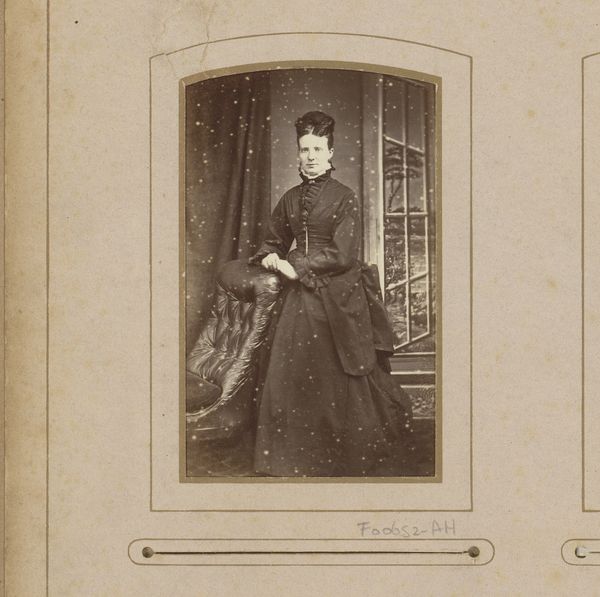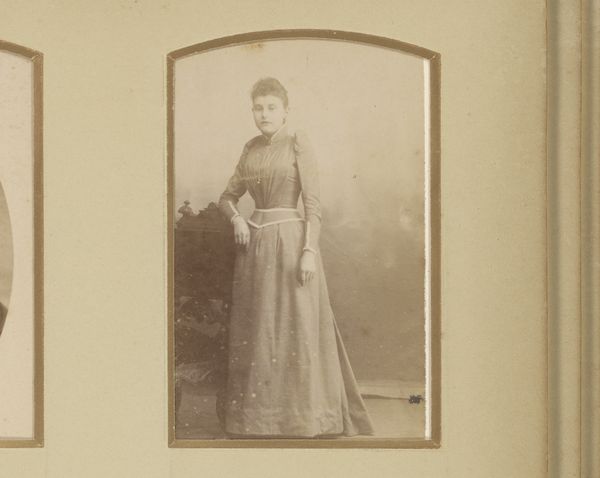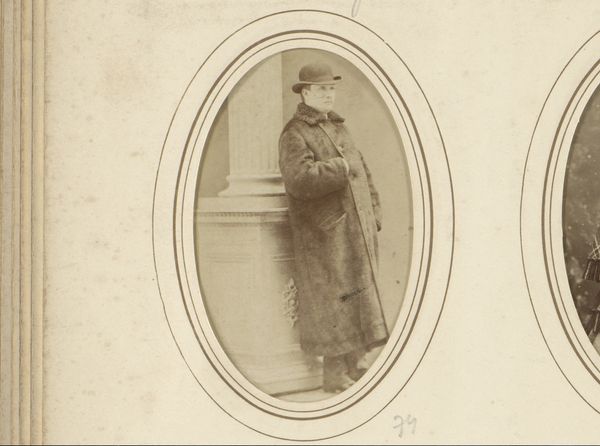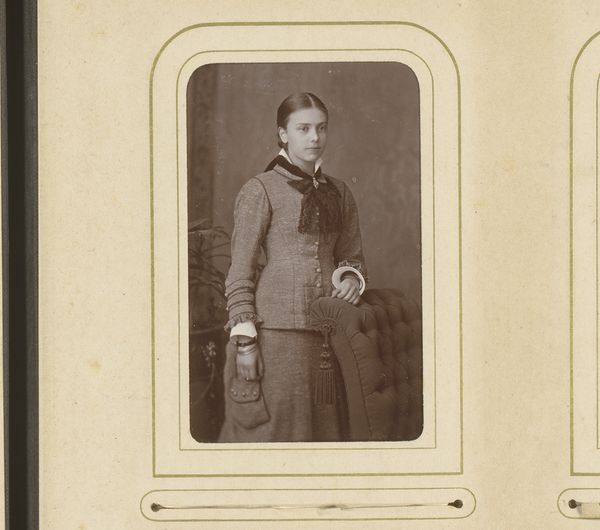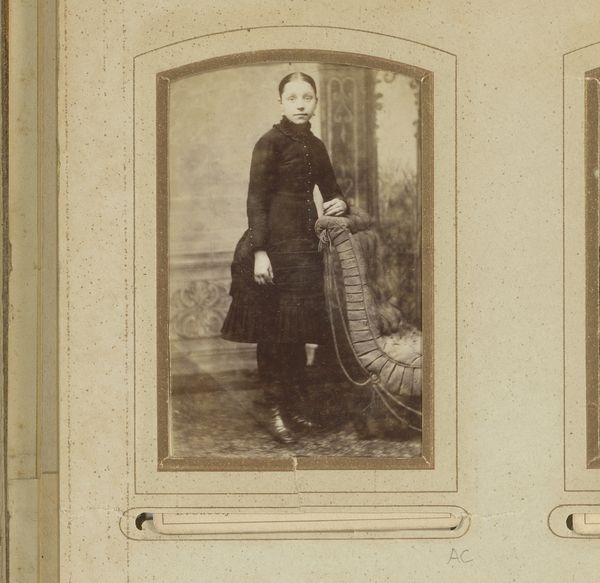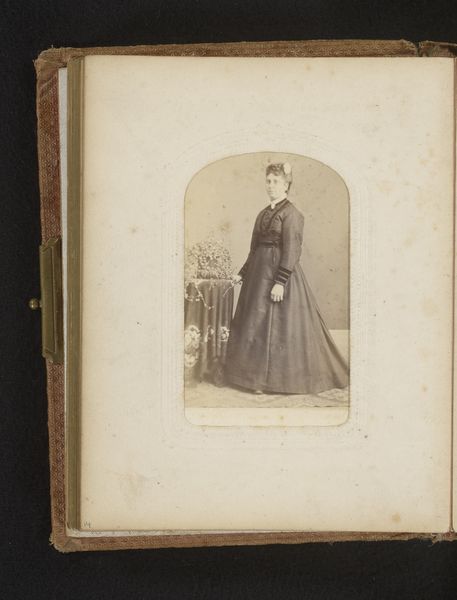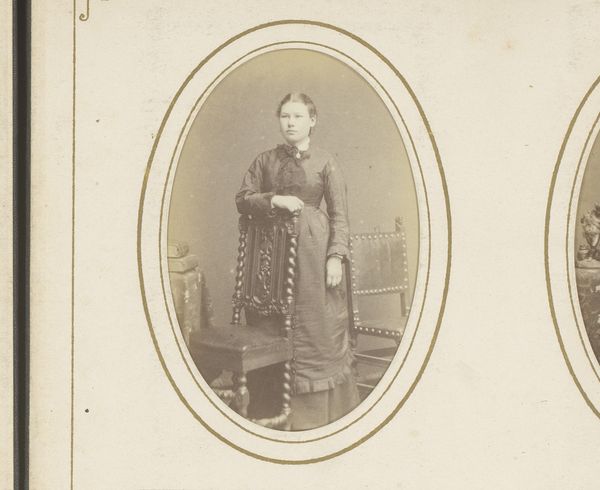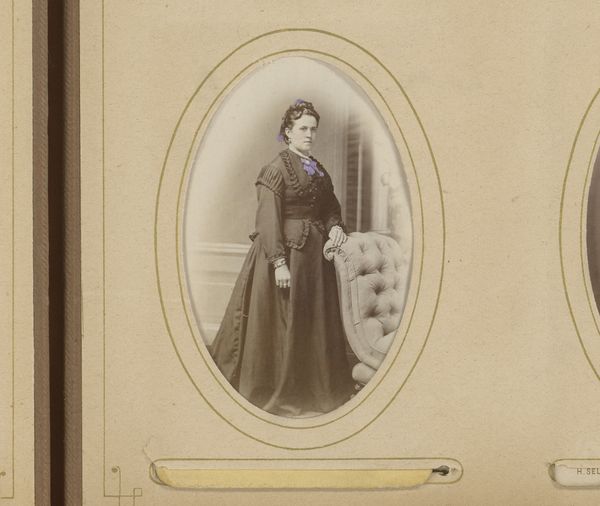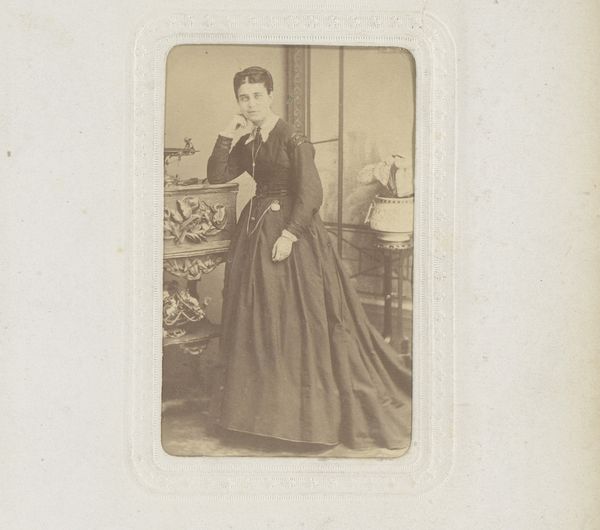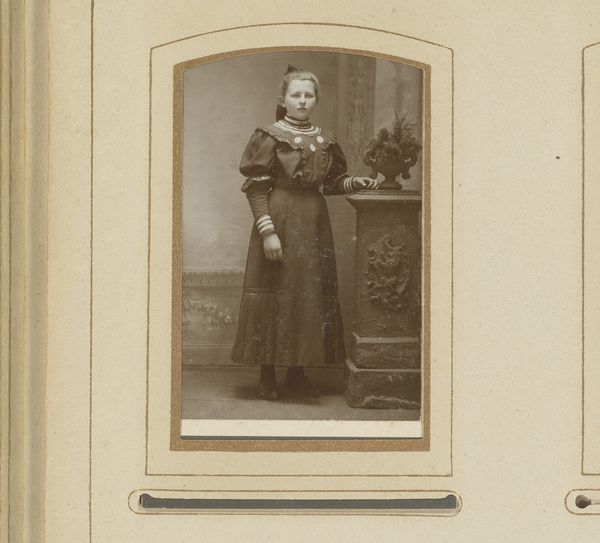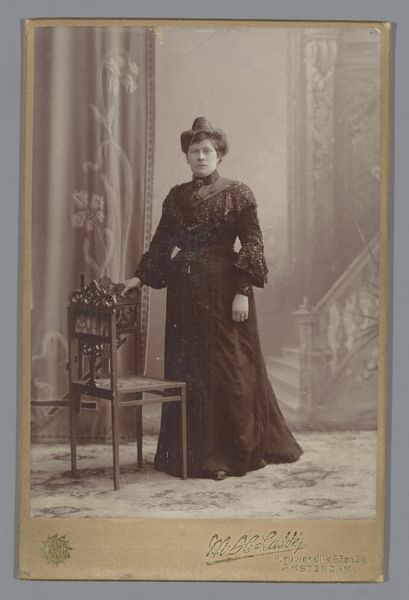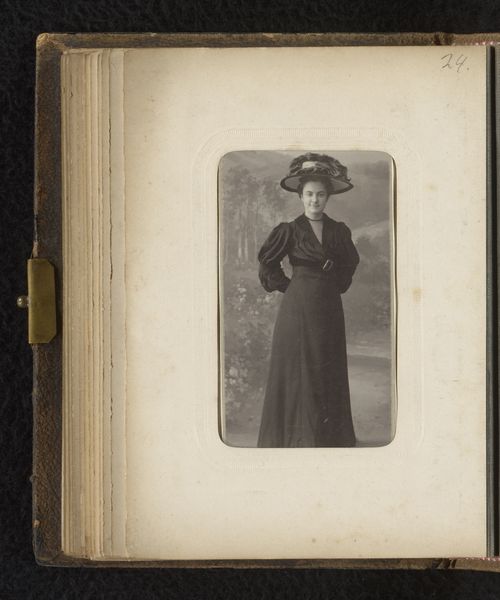
photography
#
portrait
#
photography
#
historical photography
#
19th century
Dimensions: height 82 mm, width 50 mm
Copyright: Rijks Museum: Open Domain
Curator: Today, we’re looking at "Portret van twee jonge vrouwen, staand bij een hek," or "Portrait of Two Young Women Standing by a Gate," attributed to De Lavieter & Co. sometime between 1865 and 1903. Editor: My initial impression is one of constrained formality. The monochromatic tones and rigid poses seem to reinforce the limited opportunities available to women of the era. Curator: Precisely. Let’s analyze the composition. The two figures, posed in front of a stylized fence or gate, are clearly the focal point. Note the tonal range and even lighting. It flattens the perspective, emphasizing the surface texture of their garments, and creates a clear sense of pictorial organization. Editor: Yes, but beyond the purely visual, I read the ironwork of the fence as symbolic—suggesting the barriers placed before these women. While the lighting might be "even," I’d argue that one figure is literally in the shadows, partially obscured by the frame itself. It begs the question: who are they, and what limitations defined their lives? Curator: Your interpretation presupposes biographical and social context, but what is apparent is how this photographic portrait emphasizes certain formal conventions: precise arrangements, a measured palette, and tonal nuance used to articulate surface details. Notice how this approach underscores the prevailing emphasis on decorum. Editor: It's decorum born from very specific socioeconomic pressures. This image isn't just an aesthetic object. It’s a cultural artifact reflecting the stifling expectations imposed on women. Who were they allowed to be beyond a carefully constructed facade? The limited palette adds to the austerity of the setting. It visually mutes and controls them, like subjects trapped in sepia tones. Curator: Well, it offers a fascinating synthesis of the photographic medium. Editor: A chillingly elegant reflection of repression, I'd say. I’m left with so many questions, specifically about the silenced histories that permeate this staged scene.
Comments
No comments
Be the first to comment and join the conversation on the ultimate creative platform.

